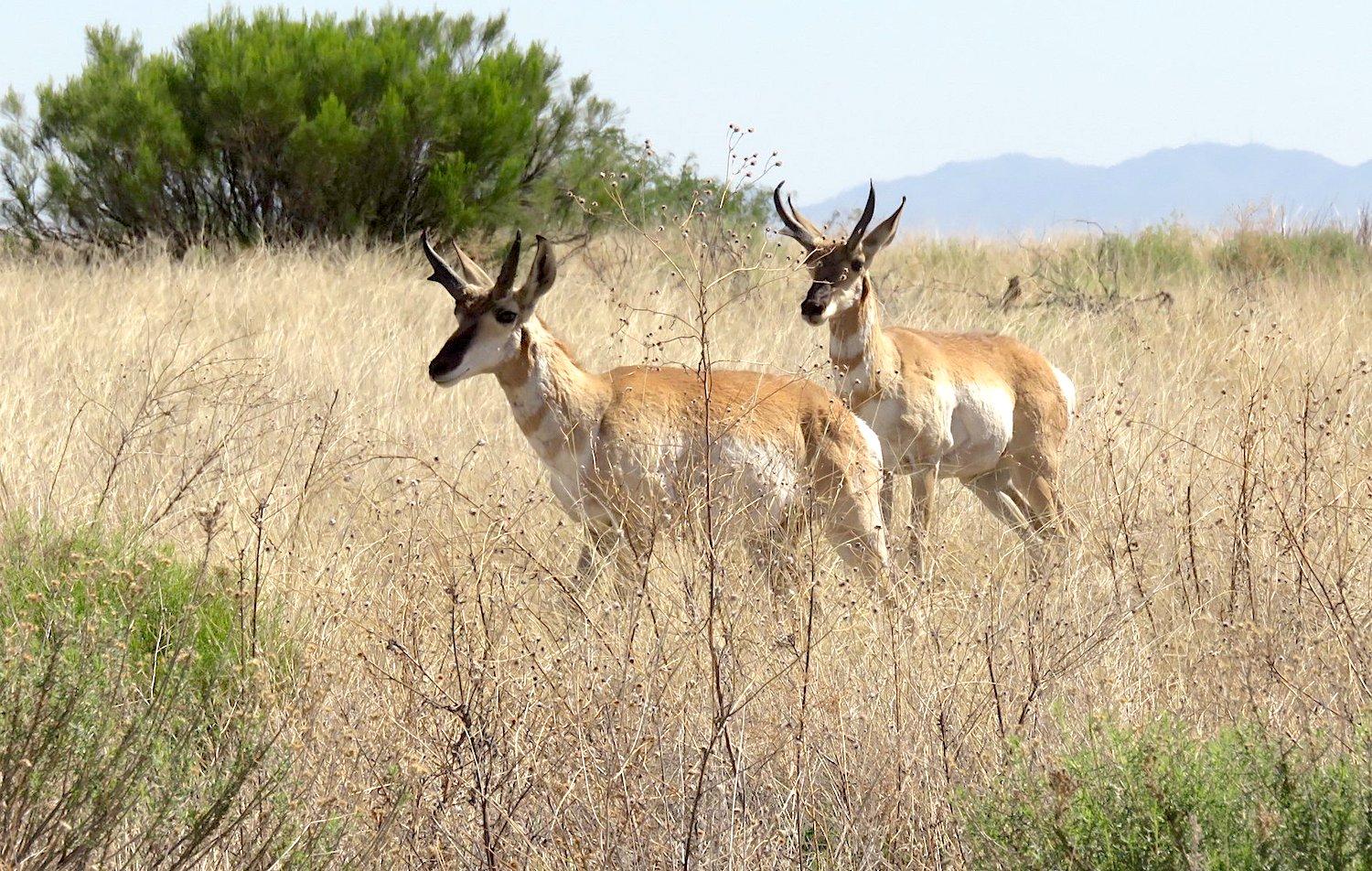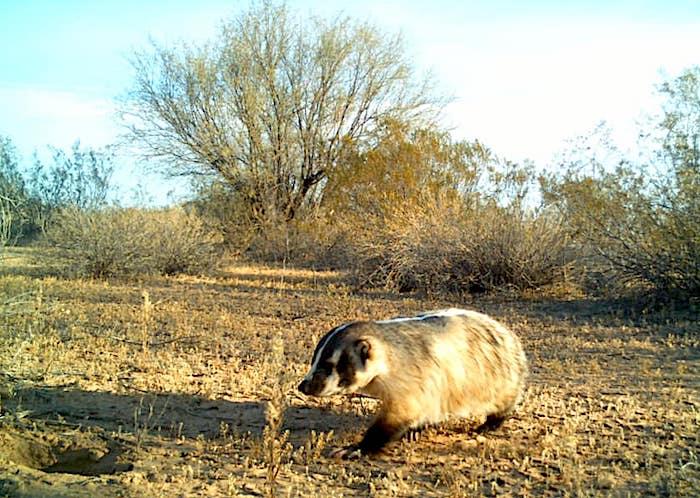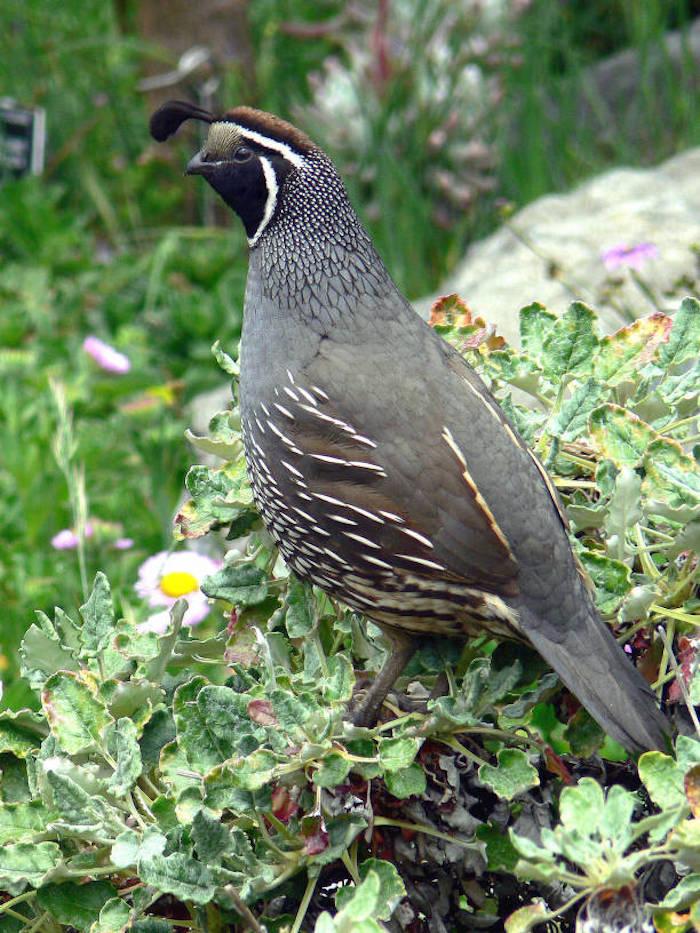
Ongoing drought conditions could force pronghorn antelope out of the Southwest by century's end/NPS file
Southwest's Long-Running Drought Imperils Wildlife
By Kurt Repanshek
You don't forget pronghorn antelope. These Western icons with their black horns and white rumps are blazingly fast -- the fastest land mammal in the Western Hemisphere -- and they show off that speed when they spot you, reaching 55 mph in an eyeblink if they need to.
But even they are not expected to be fast enough to outrun climate change and drought in the Southwest. By the end of the century, half of the pronghorn populations in the region are expected to be gone, say federal researchers. Currently pronghorn are about as ubiquitous in the Southwest and the West as white-tailed deer are in the East, but if the current drought is repeated more frequently and the changing climate brings less precipitation they'll be driven from the landscape due to a lack of water, the researchers noted in their 2018 report.
Since the 1990s, 15 of 18 pronghorn populations in the Southwest declined in number, and by 2090 nine of those populations likely will vanish, or be close to vanishing, according to the researchers' modeling projections.
"The climatic conditions underpinning the pronghorn populations in the Southwestern United States are shifting beneath them, making the ecosystems increasingly inhospitable to pronghorn persistence," concluded the researchers from the U.S. Geological Survey, U.S. Fish and Wildlife Service, and the Department of Fish, Wildlife and Conservation Ecology at New Mexico State University.
That dismal prediction (see attached report) is just part of the changing scenarios for the wild kingdom in the Southwest, where the persisting 20-year drought has left many springs and water holes dry, forced birds into decline, and left lizards struggling with reduced precipitation.

Though this badger triggered a remote camera in 2017, more and more of the species is being seen in the Southwest/NPS file
At the same time, river otters are reclaiming habitat along the Verde River near Montezuma Castle National Monument in central Arizona, javelinas have made an appearance as far north as Grand Canyon National Park, and a masked marauder is showing up more often in the Southwest, leading wildlife biologists to wonder exactly how the region's long-running drought and climate change are reordering the region's wild kingdom.
"I couldn't tell you why this is, but across the parks we've had more observations of American badger," said Andy Hubbard, an ecologist at the National Park Service's Sonoran Desert Network Ecosystems Office that counts 11 units of the National Park System -- from Saguaro National Park and Organ Pipe Cactus National Monument to Gila Cliff Dwellings National Monument and Fort Bowie National Historic Site -- in its region. "Badgers are not uncommon in a lot of parts of the West, but they're not super common down here."
Those species -- badgers, javelinas, and river otters -- are just three of the species shuffling around the Southwest. Some are on the move because of the drought, some might simply be feeling territorial growing pains and striking out for new ground.
River otters historically were seen around the area protected today as Montezuma Castle, but why they've returned is not so easily answered, Hubbard said during a phone call.
"Total speculation, maybe the drought played a role in terms of pushing animals around a little bit more, looking for water sources," he said. At the same time, habitat loss due to development could have been the motivating factor, the scientist added.
For now, ecologists say that while cyclical rains did return this summer to the Southwest, one near-normal wet year is not expected to reverse two decades that saw an unrelenting wringing of moisture from the region's vegetation, soils, and springs. And the drought isn't the only driver. Bark beetles 15 years or so ago killed a great number of Ponderosa pine in Arizona, and wildfires can sweep through an ecosystem and reorder or reset its flora.
"There's so much adaptation that goes on out there," offered Tice Supplee, director of bird conservation for National Audubon Society in Arizona. "Now, there's a direct impact in the desert when various sources of water actually go dry. Larger mammals are much more suceptible to that than the birds."
And yet, birds are not unaffected by the Southwest's drought. Indeed, a paper from early in 2020 stated that "(D)esert birds persist near the edge of their physiological limits, and climate change could cause lethal dehydration and hyperthermia, leading to decline or extirpation of some species."
The authors, Kelly J. Iknayan and Steven R. Beissinger, went on to say that climate-change impacts across the Mojave Desert showed "strong evidence of an avian community in collapse. Sites lost on average 43 percent of their species, and occupancy probability declined significantly for 39 of 135 breeding birds. The common raven was the only native species to substantially increase across survey sites."

Ongoing drought conditions could prompt California quail and some other bird species to skip a nesting/USFWS
"The collapse of the avian community over the past century may indicate a larger imbalance in the Mojave and provide an early warning of future ecosystem disintegration, given climate models unanimously predict an increasingly dry and hot future," they added.
The scientists who provided the gloomy outlook for pronghorn had more disturbing news for some bird species in the Southwest.
"Grassland birds are among the most imperiled bird guilds in North America. Scaled quail (Callipepla squamata) are a semi-arid grassland bird whose populations have declined over the past half century," they noted.
"A long-term trend in warmer, drier conditions and reduced monsoonal rainfall across their range is one factor hypothesized as a primary cause of this decline, through reduced nest success due to temperature and humidity levels above a critical threshold for egg and chick survival," they added. "While habitat loss cannot be discounted as a possible driver, population declines in areas managed specifically for scaled quail in western Texas have been observed across the same time frame indicating that these reductions are independent of habitat-related factors. Coupled with climate models forecasting shifts in the arrival of summer monsoon rains away from the critical reproductive periods of June and July, the long-term forecast for scaled quail response to decreased rainfall and higher temperatures is bleak."
The outlook is similarly disconcerting for many other species in the Southwest. According to Supplee at National Audubon, some desert bighorn sheep in Arizona had died for lack of water, and the "extended drought has resulted in less production of seeds for wintering birds, like wintering sparrows and seed-eating birds. They are not hanging out in Arizona. They are going someplace else."
Driving birds and animals in search of new habitat are the shrinking, and in some cases vanishing, springs they've relied upon.
"The greatest number of springs were dry that we've ever seen," Hubbard said, referring to the annual monitoring of perennial springs in the parks in the region. "And even springs that were wetted, the wetted extent was much smaller. ... really heavily impacted by the drought. So you can think of the effects that might have for animals that have to use those springs. Or animals that have to prey on animals that use those springs."
At Saguaro National Park for example, just two of 11 springs monitored had relatively normal water levels. "Everything else was either dry or much reduced in their wetted extent," he said.
Of 42 springs in the 11 parks in the region, said Hubbard, "more than half were either dry or much reduced."
Under drought conditions, some bird species will "skip a breeding cycle or have poor survival of young," said Supplee. Those species "include Lucy’s warbler, Gambel’s and California quail, curve-billed thrasher, verdin, black-tailed gnatcatcher, black-throated sparrow. Phainopepla will migrate to a more favorable location and not breed in the desert. Should drought and no summer rains become typical there might well be local extinction of these and other birds.
"Should climate change result in above normal temperatures and no rain as the normal, what can be expected is lower density (total numbers) and species diversity of birds and other animals," she continued. "So far, record heat has been of short enough duration and rain has come this summer to allow for our desert-adapted birds to grab the opportunity for late summer nesting."
Joel Berger, a senior scientist with the Wildlife Conservation Society as well as a research associate for the Smithsonian Institution, said it will take a good deal of sampling wildlife populations to determine which species are being affected by the drought and how.
"That said," he added in an email, "we do know -- and I'll keep attention on mammals -- that when mothers are stressed (whether bighorn, elk, coyotes, etc.), litter sizes are smaller, birthweights are lighter, pregnancies get terminated, all of which lead to poorer survival. Existing data not surprisingly show strong population declines during prolonged droughts.
"Data are excellent to show range abandonment (more likely range shifts, not total abandonment) and especially concentration around water sources," Berger continued. "For instance, bighorn sheep (and notably most are females) limit their movements to areas within about a mile or so to sites where they can access to water. These sites tend to receive more and more use as a consequence, and until rains come, these areas near these watering points are then heavily grazed/browsed. Similar data exist for deer. ... Other broad effects are greater movements by animals in desperate search for water -- or food. Examples here include: a) wide-ranging black bears who get into more conflicts with humans as they cross the wild-land borders into more peopled regions; b) coyotes searching for water/food -- same as for bears, more conflicts as boldness (rather than the typical shyness) takes over in a search to satiate for water or food."
Changes in vegetation -- losses of cottonwood trees and other species in riparian areas, replacement of native grasses by cheatgrass and Buffalo grass -- also are expected to affect wildlife habitat.
"We expect a big vegetation shift and a loss of vegetation density that's going to affect not only birds, but other species," said Hubbard. "There may be winners and losers, basically. Unfortunately, a lot of this stuff is probably going to ge in hindsight."
Audubon's Supplee agreed.
"The data is not quite in on whether we are seeing any permanent changes in our desert. Are we headed towards a 60-year drought?" she said. "We'll be able to look back on it. The tree-ring data would say this region has gone through that kind of drought before. The Sonoran Desert has expanded and contracted over geologic timelines. So it's in an expansion right now. My concern is that hotter and drier will actually make it harder for the more lush Sonoran and Mojave Desert to persist."
Other articles in this series include:
Drought, Heat Taking A Toll On National Parks In Southwest
Drought Carries Crippling Economic Impacts
Drought Is Reshaping The National Park Landscape In Unprecedented Ways

Add comment